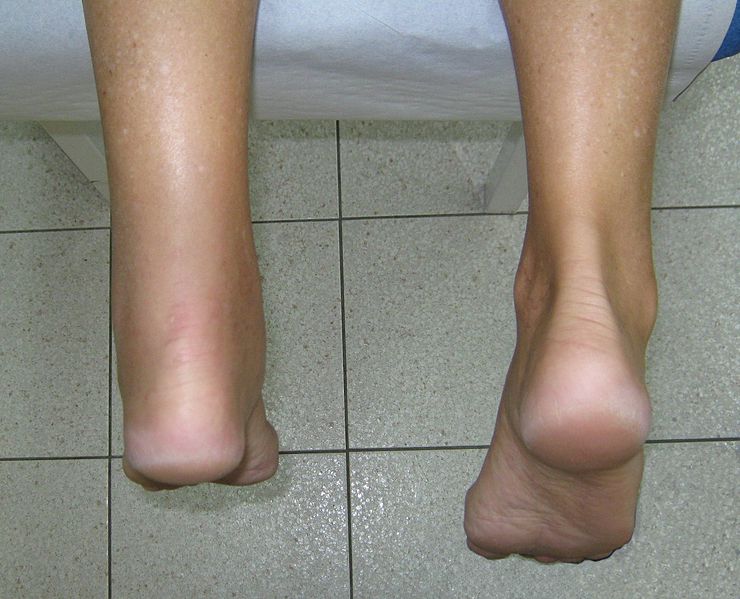COMMON CONDITIONS
Achilles Tendon Disorders | Achilles Tendinitis Treatments Specialist In Richardson, Dallas, Garland, Wylie, Murphy.
What is the Achilles Tendon?
The Achilles tendon is a band of tissue that connects a muscle to a bone. It runs down the back of the lower leg and connects the calf muscle to the heel bone. Also called the heel cord, the Achilles tendon facilitates walking by helping to raise the heel off the ground.
The two common disorders that occur in the heel cord are Achilles tendonitis and Achilles tendinosis. An often more serious condition that occurs with the Achilles tendon is a rupture. This most commonly occurs in individuals over
40 during and activity or in individuals while playing sports.
Podiatrists are the Achilles tendon specialists because they know exactly how they can relieve symptoms and treat it completely.
Achilles Tendon Symptoms
The symptoms associated with Achilles tendinitis, tendinosis, and rupture include:
- Pain—aching, stiffness, soreness, or tenderness—within the tendon. This may occur anywhere along the tendon’s path, beginning with the tendon’s attachment directly above the heel upward to the region just below the calf muscle. Pain often appears upon arising in the morning or after periods of rest, then improves somewhat with motion but later worsens with increased activity.
- Tenderness, or sometimes intense pain, when the sides of the tendon are squeezed. There is less tenderness, however, when pressing directly on the back of the tendon.
- When the disorder progresses to degeneration, the tendon may become enlarged and may develop nodules in the area where the tissue is damaged.
- The symptoms associated with an Achilles tendon rupture is sudden sharp pain and inability to walk during activity. Patients often describe the sensation as if someone kicked them in the back of the leg but when they turn around, no one is behind them.
- Achilles’ pain worsens in running.

The two common disorders that occur in the heel cord are Achilles tendonitis and Achilles tendinosis. An often more serious condition that occurs with the Achilles tendon is a rupture. This most commonly occurs in individuals when due to any injury, the Achilles tendon gets rupture or torn completely or partially, symptoms get worse. Here are the following symptoms of Achilles tendon rupture.
- You will feel being kicked at the calf muscle.
- Severe pain and swelling at the heel.
- It will be very difficult to push down or push off the affected leg while walking.
- The patient will be unable to stand on the affected leg and it will be very difficult to shift weight on that leg or foot.
- Popping or snapping sound.
Causes Of Achilles Tendon Tear
Here are some of the causes of Achilles tendon tear.
- Rupture occurs when you jump from a height.
- When you participate in any sports especially sports that require jumping.
- Stepping into a hole can also cause rupture to your Achilles tendon.
Achilles Tendon Treatment
Treatment approaches for Achilles tendonitis or tendinosis are selected on the basis of how long the injury has been present and the degree of damage to the tendon. In the early stage, when there is sudden (acute) inflammation, one or more of the following options may be recommended:
- Immobilization. Immobilization may involve the use of a cast or removable walking boot to reduce forces through the Achilles tendon and promote healing.
- Ice. To reduce swelling due to inflammation, apply a bag of ice over a thin towel to the affected area for 20 minutes of each waking hour. Do not put ice directly against the skin.
- Oral medications. Nonsteroidal anti-inflammatory drugs (NSAIDs), such as ibuprofen, may be helpful in reducing the pain and inflammation in the early stage of the condition.
- Orthotics. For those with overpronation or gait abnormalities, custom orthotic devices may be prescribed.
- Night splints. Night splints help to maintain a stretch in the Achilles tendon during sleep.
- Physical therapy. Physical therapy may include strengthening exercises, soft-tissue massage/mobilization, gait, and running re-education, stretching, and ultrasound therapy.
Achilles Tendon Rupture Treatment
- Non-surgical treatment includes icing, resting, protection, and elevation to reduce the swelling. Splints can be used as well to immobilize the affected foot.
- Surgical repair is recommended in severe cases of degeneration or rupture of the Achilles tendon in order to restore the patient’s functionality.
- Surgical treatment includes the incision in the back of the leg or calf muscle and doctors stitch the torn tendon. It depends upon the condition and severity of the ruptured tendon; repair might be reinforced with other tendons.
- Complications can also occur in surgery such as nerves can be damaged, or infection can also occur post-surgery. Minimally invasive procedures do not cause damage to nerves or there are fewer chances of infection.
- Here at Texas Foot and Ankle consultants, we are well versed in both traditional and minimally invasive repair of the Achilles tendon.
ACHILLES TENDON DISORDERS | ACHILLES TENDINITIS TREATMENTS SPECIALIST IN RICHARDSON, DALLAS, GARLAND, WYLIE, MURPHY.
SUBSCRIBE TO OUR NEWSLETTER
*for updates on our medical equipment only

